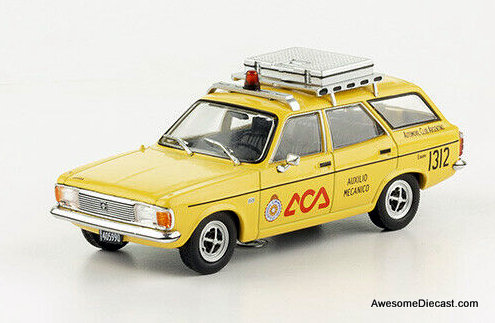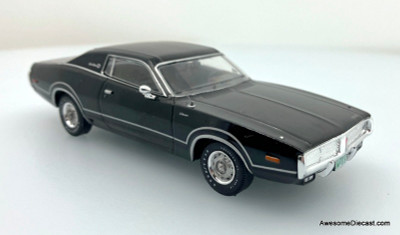IXO Models
IXO 1:43 1978 Dodge 1500 Rural: Road Rescue | Argentinian Automobile Association

IXO 1:43 1978 Dodge 1500 Rural: Road Rescue | Argentinian Automobile Association
$69.09
This model is sold in a blister pack
The Dodge 1500 was a passenger car of the C segment produced in the Argentina Republic by Chrysler-Fevre Argentina SA National, a subsidiary of the firm American Chrysler , its owner rather than the brand Dodge . It was a compact car, based on the Hillman Avenger model produced in England by Chrysler Europeand that was conceived as an economic option, for the Argentine automotive market. The name of this car, is due to the engine with which it was initially presented, being this impeller to gasoline of 4 cylinders in line and 1500 cm³. 1 2
Its appearance broke with the mold of the North American automakers that operated in the Argentine automotive market, since until their appearance, they were related to the production and sale of vehicles with 6-cylinder engines or more, leaving the production of 4-engine engines cylinders mostly for European brands. In this way, Chrysler would become the first American producer to market in Argentinaa car with 4 cylinder engine. Its low cost in sales partly to its excessively Spartan equipment, added to its robust but economical mechanics (both to produce and to maintain) associated almost until the end with a box of 4 speeds of advance and one of recoil, made it the main option for the middle and lower class populations, since it combined the benefits of a low-consumption vehicle, with those of a vehicle with sports performance (in the case of the most equipped versions with 1.8 engine). 3 Thanks to these benefits, the car also had its enhanced version to be taken to the tracks, being a leading animator in Argentine motor racing competitions, mainly in TC 2000 . 4
Its production was started on August 12, 1971 by Chrysler-Fevre Argentina SA and had three stages, being first produced by this firm between 1971 and 1980 . Then, with the acquisition of Chrysler-Fevre by Volkswagen , it was produced by Volkswagen Argentina SA between 1980 and 1986 . Finally, with the advent of the Autolatina joint venture, it was manufactured from 1986 to 1990.
The decision to start its production was due to a law issued by the Argentine National Legislative Power , because of the global oil energy crisis of those years that forced automotive plants around the world to produce low-consumption cars.
Because Hillman was the English subsidiary of Chrysler , the car chosen to begin this production was the Hillman Avenger , an English car that was produced between 1962 and 1970, a design which was taken by automakers from other countries, when it discontinued in 1970, to produce cars, one of those countries was Argentina, in which he was baptized in 1971 as Dodge 1500 .
Unintentionally, Chrysler , in addition to entering a segment that was exclusive to European brands ( Fiat , Peugeot and Renault ), pioneered a national trend that from 1955 to today remains: that of the American brands that marketed in Argentina vehicles of European origin.
The vehicle was presented in Argentina and Brazil , where in accordance with Argentina, the Legislative Power passed in Brazil, a law that forced terminals to manufacture 2-door vehicles. Thus, the 1500 was manufactured in that country, with a two-door body, coupe- (sport).
This presentation motivated its rivals to also start producing vehicles of European origin. Ford responded in 1974 with the Ford Taunus , another brand, Opel did it months later, also in 74, with the Opel K-180 .
The Dodge 1500 was presented in the country equipped with 1500 cm³ engines. Its high performance and low cost made it the favorite of the Argentine middle class for decades.
The Argentine Automobile Club (Spanish: Automóvil Club Argentino, ACA) is Argentina's largest automobile association.
It was founded on June 11, 1904, by Dalmiro Varela Castex, who in 1892 had imported the country's first registered automobile, a Daimler, and in 1894 its second (a De Dion-Bouton). The ACA oversaw the first recorded Argentine auto racing event, in 1906, and became a member of the International Automotive Federation in 1926. It began to develop of national network of service stations following a 1936 agreement with the state oil concern, YPF. Offering its membership cartographic, roadside assistance, insurance and other services, the ACA was inducted into the International Tourism Alliance in 1952.
Its national headquarters, designed in the Rationalist style by local architect Antonio U. Vilar and collaborators Alejandro Bustillo, was completed in 1942 on Buenos Aires' Avenida del Libertador. The building and its automobile museum are Palermo neighborhood landmarks.














